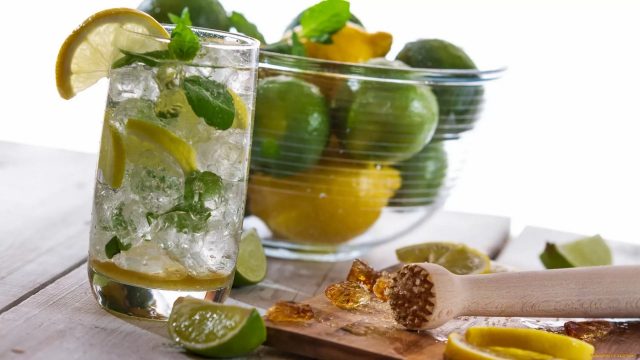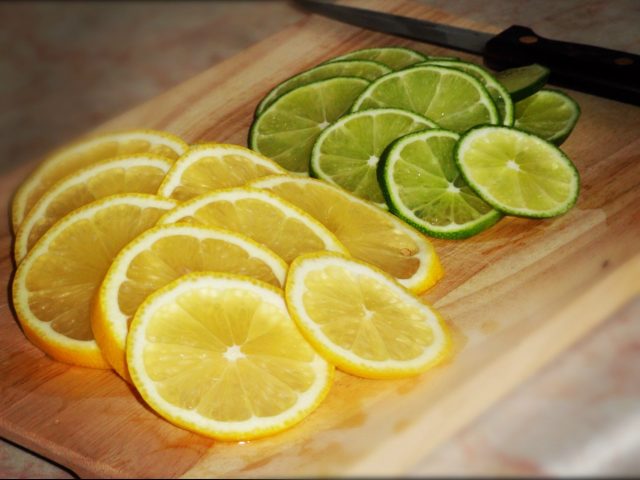Content
Citrus crops appeared on the planet more than 8 million years ago. The oldest citrus fruit was the citron. Based on this species, other famous fruits appeared: lemon and lime. Lime differs from lemon in physical characteristics, and their chemical compositions are similar in many ways. Lemon is the leader in vitamin C content, and lime has more calories. In addition, lemon, unlike lime, is more popular and is more often used in cooking and folk medicine.
What are "lime" and "lemon"
Citrus fruits are plants of the Rutaceae family. Lemon and lime are well-known members of this family. For many, these names refer to the same citrus. In fact, their differences are significant.
Lime first appeared on the Malacca Peninsula in the Mediterranean, its name comes from the Persian word "limu". Cultivation of the fruit began in the 19th century. in the Lesser Antilles. The modern market receives fruits from Mexico, Egypt, and India. Trees need a tropical climate to thrive. They grow in moist soils of the tropics and are resistant to high air humidity.
Lemon is a citrus fruit of the Rutaceae family.It arose as a hybrid, then for a long time it developed separately from related citrus crops. The Pacific Islands are considered its homeland. Countries with a subtropical climate are suitable for cultivation. The first historical mention dates back to the 12th century, as evidenced by the records of the Arabs who brought citrus fruits to the Middle East from Pakistan. Lemon is common in the Mediterranean countries, on the Black Sea coast, and in the Caucasus. This is a fruit that contains more than 80% vitamin C. The culinary uses of citrus are more extensive, in this it differs from lime. It is used in all types of dishes, added to drinks, and serves as a base ingredient in a number of baking or snack recipes.
What do lime and lemon have in common?
Both citrus fruits are similar in chemical composition. The set of vitamins and microelements differs slightly. This can be explained by belonging to the same species. Citrus fruits group together varieties with similar qualities.
Characteristics | Lemon | Lime |
Calorie content | About 30 kcal | About 30 kcal |
Vitamin C | More than 80% | 48% |
Cellulose | 3 - 5 g | 3 g |
B vitamins | 6% | 5 — 6% |
Folate | 4% | 3% |
Micro- and macroelements | 7% | 6% |
Carbohydrates and proteins | 2 g | 1 - 2 g |
The differences in chemical composition are almost invisible. Lemon is known for its high content of ascorbic acid; in comparison, lime contains only half ascorbic acid. In addition, it contains folic acid.
What is the difference between lemon and lime
The main differences relate to taste and external characteristics. When choosing citrus fruits, they are guided by the appearance of the fruit.
What do lemon and lime look like?
These citrus fruits cannot be confused. Some differ in size, others can be judged by color. Unlike lime, lemon appears denser.It has a thick peel, a white layer that is located between the peel and the pulp, it contains a large amount of useful substances.
- Lime is a small tree with greenish fruits. The shape of the fruit can be semi-oval, elongated on one side. Lime peel color ranges from light green to green-yellow. The pulp of the fruit is green and juicy. The diameter of the fruit can reach 5 cm. The average weight of the fruit is 150 g. Limes ripen all year round, with the main harvest occurring after the rainy season.
- Lemons are collected from tall evergreen trees. They ripen in the fall. The fruits can grow up to 10 cm in length, the width of the fruit is 5 - 8 cm. The shape of the fruit can be semi-oval or large, it depends on the variety. Peel color – yellow, light yellow, yellow-green. The pulp is juicy, there are seeds inside.
The difference between lime and lemon taste
Taste characteristics are one of the main indicators of difference.
Lime has a distinct sour taste. Hybrid varieties can taste bitter; this property is used to prepare alcoholic beverages. However, the fruit is not suitable for making desserts because it does not contain sucrose.
Some varieties of lemons have an exceptionally sour taste, but there are hybrids with pronounced sweetness. They have a high content of pectin and sugar.
Culinary uses of lemon and lime
The differences between citrus fruits are expressed in the methods of culinary use. The main culinary similarities: both citrus fruits are suitable for making lemonades of the same name.
Uses of lemons:
- they are consumed fresh, the pulp is added to fruit salads, and whole slices are used as a snack;
- the juice is an integral part of well-known salad dressings and sauces;
- juice is used to marinate meat and poultry;
- the zest, juice and pulp are suitable for baking, they are added to dough or used as filling for shortbread pies;
- juice is one of the components of drinks.
Lime is the basis for making alcoholic and non-alcoholic cocktails. In Asia and Latin America, lime is used in hot dishes as an independent ingredient. The famous cold appetizer guacomole is prepared exclusively with lime. For Thai sweet and sour soups, only juice is suitable. The most famous first course is Tom Yum soup.
Lime juice is used to extract citric acid from it. Lime oil is used to improve the taste of various drinks.
Differences in shelf life
Lemon differs from lime in the period during which the citrus retains its beneficial qualities:
- Lime is stored for about 2 weeks at a temperature of 0 to +4 °C;
- Lemons can be stored for a month in the refrigerator and for 3 to 4 months in the freezer.
Citrus fruits that are cut have different shelf life:
- Cut limes should be consumed within 2 - 3 days;
- Lemon that is placed cut side down in a container and placed in the refrigerator can be stored for up to 5 days.
Differences in growing conditions
Lime trees, unlike lemon trees, are able to bear fruit all year round. They require a humid tropical climate to thrive.The main period of development occurs during the rainy season. The soil in which limes feel comfortable should be light and contain loam. Lime is frost-resistant and can withstand unexpected frosts down to -1°C without loss.
Lemon trees are light-loving. To produce fruits, they need daily sunlight for 12 to 15 hours. They do not tolerate drought or excessive moisture. The fruits ripen in early autumn after a long period of abundant flowering. Harvesting is carried out once per season.
Which is healthier: lime or lemon?
Lemons and limes are different from each other, the benefits of each type can be judged by the effect they have. To understand which citrus fruit is preferable, it is necessary to analyze their effect on the human body.
One lemon contains more than 30% of the daily requirement of vitamin C. Due to this, citrus is used for medicinal purposes. It is recommended to drink a glass of warm water with a slice of lemon in the morning on an empty stomach. The drink helps awaken the body, activates the circulatory system, and normalizes the acid-base balance.
Lemons
- indicated for vitamin deficiency, the development of anemia of various origins;
- have an anti-cold effect, essential oils and ascorbic acid relieve inflammation of the upper respiratory tract, prevent the spread of viruses;
- are able to influence the condition of blood vessels, normalize blood flow and prevent blood stagnation;
- lemon juice activates the pancreas and improves digestive processes;
- contribute to the normalization of metabolic processes.
The peculiarity of lemons is that they facilitate easier absorption of beneficial elements such as calcium and iron.
Limes differ from lemons in that they contain folic acid, or vitamin M. It is necessary to strengthen blood vessels and form important fetal systems during pregnancy. Lime juice is added to a glass of water and drunk throughout the day.
Limes
- have immunomodulatory properties, correct the activity of the body’s defense mechanisms;
- have a calming effect, therefore have a beneficial effect on the nervous system;
- Due to the increased amount of lemon juice, they can be used in the treatment of colds.
In addition to the listed properties, both citrus fruits are used as a component in the preparation of traditional medicine recipes or home cosmetology. The use of lemon is the most common. Due to the high content of ascorbic acid, lemons are most in demand in the treatment of colds, and are also used to whiten the skin and remove age spots. Lemon juice and pulp are in demand in the preparation of masks for the face, hair and body.
In addition, lemon cannot always be replaced in culinary preparations. The bitterness characteristic of lime is not suitable for use in baking or adding to desserts.
One of the benefits of lemon is when it is used frozen. When frozen, citrus retains its beneficial properties. In addition, juice structured after freezing is quickly absorbed by the body. Frozen fruit is used to treat various diseases.
Conclusion
Lime differs from lemon in a list of properties and characteristics. Sometimes citrus fruits can be used interchangeably.The beneficial properties of lemon, as well as its taste, make it more in demand.

















